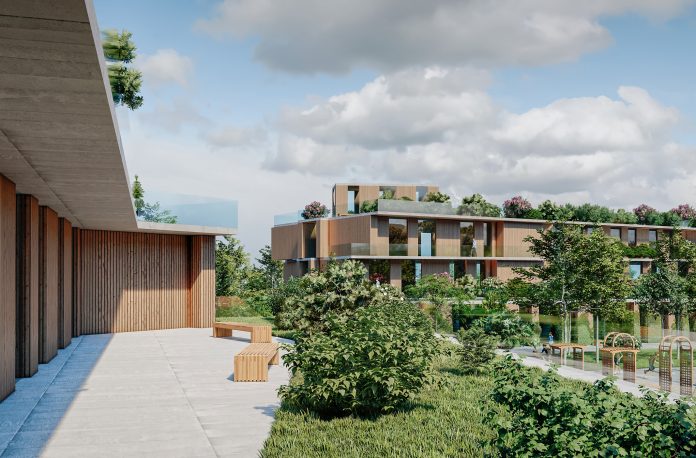Tim Whitley, director of decarbonisation and sustainability at Arup, discusses a new report setting out a pathway to decarbonisation for the UK’s higher education institutions
The UK’s higher education institutions are, as large estate portfolio owners, in a unique position to lead the charge in decarbonisation to meet the country’s net zero targets. As a result, they are under growing pressure from funders, staff and prospective students to decarbonise.
Against this background, it is promising to see the industry making decarbonisation a strategic imperative. Higher education institutions have set ambitious goals, often decades ahead of the UK’s 2050 new zero ambition, and which often also incorporate indirect Scope 3 emissions. Despite this, the sector has found itself struggling to adapt at the speed required.
In response, Arup has leveraged its expertise across property, sustainability and decarbonisation to launch a new report – From Commitment to Reality: Delivering Ambitious Decarbonisation Targets in the Higher Education Sector – which outlines an eight-step “Pathway to Decarbonisation” for the UK’s 160-plus academic establishments.
It uses a systematic approach to decarbonisation, allowing institutions to visualise where change could be most effective, affordable and practical in the short, mid and long term.
Ultimately, the focus is on ensuring institutions do not just address the pressing issues they’re facing today but consider futureproofing to mitigate against the challenges of tomorrow.
Considering Scope 3 emissions
The UK’s universities and higher education institutions emit 1.4m tonnes of CO2 annually, when considering their emissions associated with the burning of fossil fuels and purchased electricity. This does not take into account Scope 3 emissions, which could be up to 25 times greater; for a typical university, these might include the purchasing of goods and services, student accommodation, student commuting, business travel and financed sources.
Decarbonising these emissions relies heavily on interventions to change behaviours and the conscious choice of individuals, making them much more complex and difficult to plan for, measure and influence when compared to heat and energy decarbonisation approaches.
A pathway to campus decarbonisation
The successful delivery of a decarbonisation commitment can be broken down into a multi-pronged action plan. Each stage comes with challenges and considerations, and this particular pathway has been designed to help institutions prioritise their efforts.
Step 1: Define and own
Historically, the ownership of decarbonisation targets sat within an isolated department. However, increased ambitions mean the delivery of university targets must go beyond the remit of traditional estates or sustainability teams. The integration of awareness and ownership across the organisation is essential, which requires buy-in, engagement and the right cultural context. Critically, this should cover both academic and professional services departments.
Step 2: Understand
Creating an accurate picture of emissions sources both now and in the future provides the necessary insight to develop targeted decarbonisation strategies. This picture must be robust to ensure efforts are spent proportionately and focused in the right areas. However, there is a balance to strike and, in certain cases, a need to move away from over-accurate, resource-heavy accounting processes.
Step 3: Plan
There is often conflict between decarbonisation and the strategic direction of many universities, such as physical campus expansion. New buildings come with large emissions price tags, namely through the procurement of materials and the construction processes required in their delivery. Being open and transparent about these strategic conflicts is key to building a consensus across higher education for opportunities to reduce emissions.
Step 4: Prioritise
An approach that includes phasing many technical interventions and huge cultural shifts is required. Priority actions should be balanced to ensure it is not just easy wins being phased first. The longer-term programmes of work that bring the necessary structural and system changes need to start now, with enough time for them to be embedded before commitment dates are reached.
Step 5: Collaborate
Collaboration across the sector will be required to achieve the necessary culture shifts and move away from these high-emission practices, such as travel to conferences and networking. Only through sector-wide consensus, with buy-in from the academic community and their governing bodies, will change be possible.
Step 6: Finance
The financial cost of decarbonisation is complex. Having a clear understanding of the cost of decarbonising vs not decarbonising is crucial. One of the key questions facing all universities is how to pay for their decarbonisation programmes. These costs can come in a range of different forms, from large capital expenditure to increased operational costs. However, these costs should be balanced with the cost of not delivering on decarbonisation commitments, including the reputational damage, resulting in associated losses to income.
Step 7: Implement
Successful implementation will require a shift in most university cultures, regardless of whether their strategy is integrated, or if their delivery model is built upon shared ownership and accountability. In the long run, stakeholders will buy into what is valued and rewarded by the institution.
Step 8: Monitor
One of the biggest battles when trying to monitor progress is the limitation of certain quantification methods. Improving some of these shortcomings for procurement emission calculation is heavily reliant on the understanding of university suppliers. To ensure accurate measurement, it is fundamental that they are able to provide emissions data in the correct format. The onus is on the university to ask the right questions and be willing to provide the necessary support to suppliers.
A roadmap to making decarbonisation ambitions become reality for high education
These eight steps should act as a vital roadmap, providing the necessary impetus to make ambitions a reality. Crucially, it provides a clear outline as to the priority areas of focus.
The climate emergency has led to a shift in public and political attitudes and an increased level of scrutiny on the need to decarbonise. With no signs of abating, these education establishments must act now in order to guarantee their survival for future generations.
Tim Whitley
Director of decarbonisation and sustainability
Arup
Tel: +44 (0)161 602 9316

















